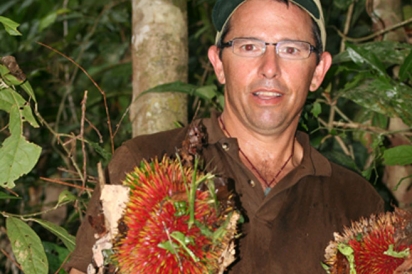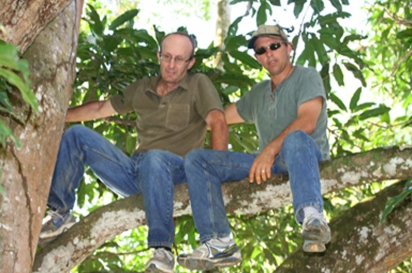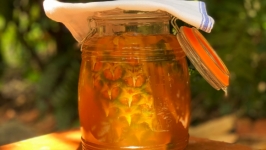Mango Apocalypse 2013: What the Heck is Happening?
South Florida’s mango season is off to a weird start this year, to say the least: Blooms appeared on trees very early. This led to an unseasonably early harvest. And there may be another one … maybe? The phenomenon is fully explainable, but deeply depressing, says mango expert Dr. Richard Campbell, director of horticulture, Fairchild Tropical Botanic Garden and columnist for edible South Florida.
“We had an extremely early bloom due to October cold,” he explains. “Then it was cold and warm, cold and warm, cold and warm, and then cold. The end result was an early crop and a late bloom – perhaps the latest I have ever seen. Put over this a couple of wet weeks, and you have the perfect storm of mango season Armageddon.”
Entire crops have been ripening in April and May instead of during the summer months, he says. “And there are tiny fruit that will ripen when?” he asks. “Only the Lord could know this. Not to paint such an ugly picture, but this was truly unprecedented in my lifetime.”
There is some good news – the weather hasn’t affected the size or flavor of the mangos, he says. The only problem was anthracnose, a fungal disease brought on by winter rains, Dr. Campbell says.
Still, it might be wise to stock up now while the getting’s good. The Fairchild Farm, open on weekends, sells fruits they grow – recent offerings include ‘Nam Doc Mai’ and ‘Jean Ellen’ and small dark purple mangos called Kastooree (Mangifera casturi, left) with fibrous deep orange flesh that’s juicy and flavorful. Look for local mangos in fruit stands in the Redland and neighborhood stands, as well as farmers markets (look at the labels of the mangos in your neighborhood grocery stores since they are likely to be from Haiti or Mexico).
Meanwhile, Campbell has to think about what to do for upcoming International Mango Festival, held at Fairchild the second week of July. “I am now having to erase the image of the crop disappearing for the year to prepare to protect the crop that I need for the mango festival,” he says. “It will be small and a real struggle to come by. Now it rains, now it rains. Woe is me – the life of a mango grower. The apocalypse will be relatively easy. I mean zombies won’t eat mangos, will they?”
On a Mango Trek
Dr. Campbell travels the world in search of mangos and other tropical fruit. Here, on an expedition searching for wild mangos in Borneo, he and colleague Yair Aron are sitting in the tree ‘Rancha rancha’ (Mangifera quadrifida). Another tropical fruit that has clearly caught Dr. Campbell’s fancy is the red durian, Durio dulcis. “This fruit should be illegal,” he says.










